The day the music died - why Karachi lost its groove during Ziaul Haq’s regime
Arif Hasan explains how policies of the 1970s created the polarised city of today.
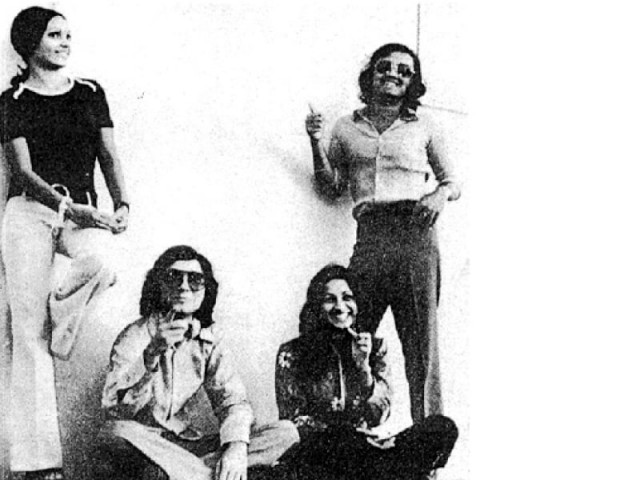
An image of Karachi University students during the 1960s. (COURTESY SIBTAIN NAQVI)
Arif Hasan wants to talk about the stories we don’t talk about. He wants to talk about the time he bumped into singer Suleman Shah at the Islamabad airport. Military dictator Ziaul Haq had banned Shah from performing with his trademark ghungroos in a countrywide crackdown on artists.
“Shah saheb, without your ghungroos baat nahi banti,” Arif Hasan told the man. It just isn’t the same. Shah agreed and the two men embraced each other and wept.
They were weeping for a culture that was under attack. You will hear about it from nostalgic Karachi sectagenarians. There were night clubs, dance halls, cinemas, bars. Historian and architect, chronicler of Karachi, Arif Hasan, is the first to plead guilty. Many heads in the audience at the first international Karachi conference on Saturday nodded in sympathy.
“But it is a [nightlife] culture that could not have survived,” Hasan pointed out. It was a culture of a colonial port city with a colonial administration under the Empire. Karachi was a city with neighbourhoods that were ethnicity- and clan-based. “It was governed by a powerful empire so there was peace and harmony.”
And then came the Freedom Movement, bringing with it, as all such movements do, a strong element of radicalism, progressive thinking and activism. The same was true of Karachi and the migrant intellectuals who came to it after Partition. The progressives had no problem debating, dissenting and enjoying the port city culture. “But if we look at the history of cities in a postcolonial period, the greatest amount of violence has taken place in those that were the most peaceful and had the greatest diversity,” said Hasan. Take the example of Zanzibar.
Why did these cities become so violent? The state became party to the conflict and supported one side or the other. Hasan presented more proof in the example of a colonial Bombay that died when the colonial administration changed. But because this city had developed strong consensus-making, it was spared a violent fate.
Back to Karachi, where trouble began soon after Partition. It surfaced in the shape of the PPP-PNA (Pakistan National Alliance) conflict in 1977 that led Zulfikar Bhutto to ban Karachi’s nightlife. “It also led to Zia’s dictatorship,” said Hasan, referring to its ideology that suppressed all forms of thinking and living apart from what it and its collaborators promoted. “This story has not been told,” said Hasan, “neither from the point of view of the elite and nor from the [point of view of the] working classes.”
But new research, Hasan said he has discovered that Bhutto was possibly involved in talks to end the cultural deprivation. “My research shows that it is more than possible that if the democratic process had continued [as in, Ziaul Haq had not taken over]… a less liberal but synthesis of the two political opponents would have emerged.” Conversations were taking place between banned entities and the Bhutto regime and they were already looking for compromises for these businesses to continue. But the July 1977 coup made this impossible. For Hasan, an examination of these policies is important to understand the Karachi of today.

Zia’s men drew up lists of artists. Fine arts, the performing arts were clamped down on. The PIA Art Academy had no budget. Unsuccessful attempts were made at banning Sufi music at shrines. Classical music wasn’t allowed on the radio.
A majority of Zia’s cabinet were members of the “anti-fahashi and anti-ayashi” movement, according to Hasan. How did the change happen? Zuhr prayers were made compulsory at government institutions. “Many non-government organisations and private ones adopted this to satisfy the demands of their new mentors,” said Hasan.
Zakat was instituted. “The Shias objected as previously Zakat was voluntary,” said Hasan. As a result people came to look at each other as Shias and Sunnis and this has since consolidated itself. “A process of discrimination and fragmentation began,” said Hasan.
The nazim-e-Salat was introduced by Zia. This was a person who wandered around neighbourhoods, calling people to prayer in the morning. If you didn’t go, you were visited politely in the evening and asked why. “In the elite areas,” said Hasan, “this did not really matter, but in low
income areas this had a major impact on social life, on norms and values.”
If this seemed cosmetic, the real blow was dealt when schools were told extra-curriculars could not be allowed. Student unions were also banned by Zia and thus, the institution that produced Pakistan’s most radical leadership, journalists, literary figures, sportsmen and women, vanished.
“International geography and history were discontinued from schools,” added Hasan. “Pak Studies was considered sufficient for an understanding of global issues.”
Most people are familiar with aspects of this history. But it was Hasan’s ability to explain how this affected the elite of Karachi and thus, the city of today, that delivered the absolute knock-out punch on the conference’s first day.
“Pakistan’s elite and upper middle classes are Westernised,” said Hasan, “but because of enmity with Bhutto’s populist [approach], they supported Zia.” This changed, however, when their children’s schools were affected. They stopped sending their children to government colleges, which thus ceased to be multi-class institutions. The elite stopped taking part in public life, the zoos, public spaces. “They formed their own world separate from Karachi and became depoliticised.”
The removal of the elite brought on a decline in the standards of colleges, the public sector real estate and recreation. “So today, the elite of Karachi as a class are no longer elite; they have become just rich people, uninterested and uninformed.” This is why when the elite become policy makers, they are emerging from educational institutions that are creating professionals who have no idea about the city and have a strong anti-poor bias.
How Karachi is changing now
According to Arif Hasan, the most important development that has taken place in the city is the emergence of a native bourgeoisie, a fiercely upwardly mobile middle class. What matters to them is getting their ID cards, birth and death certificates, getting friends released from custody, buying plots of land for their homes. “The disadvantaged people contact their ethnic or religious organization [in the absence of a strong government],” explained Hasan, and this in turn strengthens these organisations and gives them votes to perpetuate a system.
There are five other key ways Hasan said Karachi is changing. “We are seeing an increasing choice in marriage that never existed before,” said Hasan. “All this means greater freedoms and desire for these greater freedoms but also a conflict with tradition and aspirations - and that comes across very strongly in court marriages.”
Old low-income settlements are consolidating and they form the majority of Karachi. “They are acquiring middle-class values,” he said. This is why you will see more beauty parlours in katchi abadies, cyber cafes, wedding halls where segregation is ending.
More heartening is the trend of the educated upper middle class groups taking an interest in the city’s social and development. Recently, we have seen the rise of the formal sector entertainment for an elite who can pay for it. But we also see huge crowds of middle class Karachi’ites who turn up for the exhibitions and events at the Expo Centre.
Hasan was most worried about the creation of a new under-class living in settlements where it finds place. “The old migrants came because they wanted to come,” he said. “They came from stable societies where a government functioned. But the new ones are coming because they are forced to come for economic and social reasons.” He said he wasn’t sure how Karachi will absorb them.
“There can be no peace without equity and justice is possible in the world we are heading towards,” he said. “The city needs a vision but not the one outline in the 2020 Master Plan.” We don’t need a “world class” city but perhaps a vision for one that is commuter- and pedestrian-friendly to bring everyone together.
Published in The Express Tribune, November 3rd, 2013.



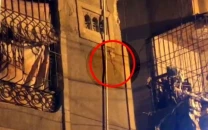
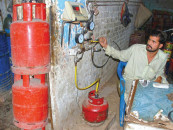
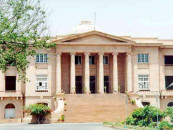
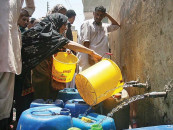












COMMENTS
Comments are moderated and generally will be posted if they are on-topic and not abusive.
For more information, please see our Comments FAQ